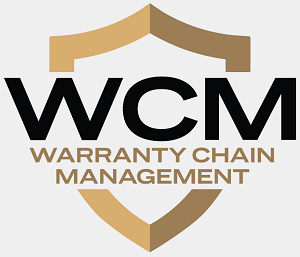Service Contract Market Size:
There are signs that the market is topping out at current levels, although home warranty sales continue to soar. Other types of protection plans, such as vehicle service contracts, mobile phone insurance, and extended warranties for brown and white goods, are no longer growing like they used to, though jewelry and furniture protection programs showed slight growth.
American consumers continue to buy extended warranties at a fast pace, but market growth is getting harder to find, as even the latest must-have products such as smartphones gets close to replacement mode, and the perceived need for protection plans declines for aging technologies such as flat-screen televisions and laptops. However, the surprising exception to the rule is the home warranty market, which is soaring at a 16% growth rate.
A reader called last week, asking if Warranty Week had recently updated the service contract market data contained in the October 9, 2014 newsletter. Try as we might, scanning the archive of newsletters and using the website's search engine, we couldn't find an update online.
Meanwhile, another reader recently asked if we'd ever got around to delivering on a promise made to add in data for furniture and jewelry protection plans sold to consumers. We checked, and again, couldn't find any evidence that it was ever published. So let us deliver on two promises at once: below is a 2017 update of the U.S. market for extended warranties/service contracts/protection plans sold to consumers, which for the first time also includes data for furniture and jewelry protection plans in addition to vehicle service contracts, home warranties, computer extended warranties, retail appliance and consumer electronics service contracts, and mobile phone insurance.
The first item to note is that several of these categories either showed no growth or slight declines in 2017, according to the financial data now arriving for the past year. The most notable exception to that trend was the home warranty category, which seems to have grown by 16% to $2.53 billion in 2017. But the newcomers also grew, with jewelry service plans advancing by 2% to $3.2 billion, and furniture protection plans growing by 3% to $1.1 billion last year.
Total Market Size
In Figure 1 below, we're sizing the total for the eight categories of consumer protection plans at $44.7 billion, which is a $250 million decline from 2016 levels. Vehicle service contracts are estimated to have brought in $16.7 billion, down $300 million from 2016, while plans covering brown and white goods sold at retail came in at $8.25 billion, down by $60 million. Mobile phone insurance plans sold by the carriers also slipped a bit, from $8.75 billion in 2016 to $8.6 billion in 2017.
Figure 1
U.S. Consumer Service Contract Market
Premiums Paid by U.S. Consumers, 2008 to 2017
(estimates in U.S. dollars)

As mentioned, most of these declines are slight, but they add up to something that looks like a market top. Had it not been for the $340 million advance by the home warranty companies, the overall dip would be more noticeable. But it's still a dip.
Market Shares
With the addition of jewelry and furniture protection plans, the overall market expands considerably. With them, the total amount of premiums paid by U.S. consumers in 2017 stands at $44.7 billion. Without them, it's at $40.3 billion.
Also, there's quite a bit of crossover between the eight categories, with the exception of vehicle service contracts, which are a thing unto themselves, sold primarily by auto dealerships to protect new and used vehicles. For instance, there are two ways to protect appliances: through service contracts sold by retailers, or through home warranties. There are three ways to protect mobile phones: through service contracts sold by retailers, through extended warranties sold by Apple Inc. (still classified as a computer OEM program despite the predominance of the iPhone over the Mac), or through insurance plans sold by phone companies. And then there are two ways to protect PCs: through service contracts sold by retailers, or through service contracts sold by the manufacturers (Dell, HP, Apple, etc.).
We strive not to count anything twice, but inevitably there's some duplications between the lists. For instance, with the newly-added jewelry and furniture categories, there may be some double-counting with mass merchandisers such as Walmart and online retailers such as Amazon.com, which are prominent in not only electronics and appliance protection plans but also in programs sold for jewelry and furniture, as are several other clients of administrators such as Asurion and SquareTrade.
However, the bulk of the new additions come from programs sold by retailers that are not at all prominent in the electronics and appliance categories. For instance, the Zales, Jared, and Kay Jewelers brands controlled by Signet Jewelers Ltd. together sold over $440 million in self-insured service contracts last year, and they aren't on the list of retailers in any other category. Guardsman, one of the top administrators of furniture protection plans, also does not work with any existing insurance underwriter, using instead the resources of its parent company Valspar Corp. (soon to be acquired by Sherwin-Williams). So these are newly-counted programs.
Eight Market Segments
In Figure 2, we're simply organizing the service contract "market shares" into eight categories, not so much by the product they protect as by the way they are sold. Therefore, if a mobile phone protection plan is sold by Apple, it goes into the computer OEM category. If it's sold by Walmart, it goes into the retail consumer electronics category. And if it's sold by Verizon Wireless, it goes into the mobile phone insurance category.
In much the same way, if a washing machine is protected by a Home Depot plan, it goes into the appliance category. But if it's part of a plan sold by American Home Shield, it goes into the home warranty slice. If HP sells you a Care Pack, it goes into the computer OEM category. But if Best Buy protects your computer, it goes into the consumer electronics category.
With all that trivia in mind, Figure 2 organizes the U.S. consumer service contract market into eight categories, of which vehicle service contracts remain by far the largest. In 2017, the premiums paid by consumers for VSCs amounted to $16.7 billion, which was 37% of the pie. The mobile phone companies collected $8.6 billion, or a 19% slice, while the consumer electronics retailers collected $6.6 billion, or 15%. And then the remaining five categories held the remaining 29% of the pie.
Figure 2
U.S. Consumer Service Contract Market
Premiums Paid by U.S. Consumers, 2017
(estimates as a percent of $44.7 billion)

In broad terms, protection plans sold for vehicles comprise about 37% of the market, while plans for high-tech products comprise an additional 44% if we combine the shares of phones, electronics, and PCs. And then the remaining four categories, which we'll call the residential segments, make up the remaining 19% of the pie.
It's somewhat different from the product warranty "market shares." If we divide the $26.3 billion in claims paid in 2016 into three segments, 49% would be vehicle-related, 36% would be high-tech, and 15% would be home furnishings and building-related warranty claims. We'll have a final read-out on 2017 warranty claims in March, after all the annual reports have been published.
Mobile Phone Protection
As was mentioned, the VSCs are fairly separate and distinct from the other seven categories, with little crossover. However, there's at least three categories covering mobile phones in some way: the phone companies, the electronics retailers, and the PC manufacturers. So what if we were to look at that market in terms of the product protected instead of by who sold the protection plan for it?
What we would need to do is carve out the AppleCare iPhone revenue from the computer OEM category, and take a slice of the consumer electronics category that represents just mobile phones and not televisions or computers. Fortunately, we've already completed the first step in a November 9 newsletter on Apple's warranties and service contracts (Figure 8). And we've also made estimates of the product mix for top mobile phone retailer programs.
Therefore, in Figure 3, what we're doing is adding together the three possible ways a consumer could protect their mobile phone from harm (there is a fourth possibility: direct sales, but let's add that into the retail slice). And when we add those together, we estimate that U.S. consumers spent about $12.75 billion in 2017 on plans to protect their phones.
Figure 3
U.S. Mobile Phone Protection Plans
Premiums Paid by U.S. Consumers, 2009 to 2017
(estimates in U.S. dollars)

Despite the way the chart is drawn, the AppleCare category did in fact grow ever so slightly in 2017, after contracting by $420 million from 2015 to 2016. But this is the only growth in the chart for last year. The overall 2017 total was down by about $200 million, as numerous consumers dropped their monthly plans or bought new phones without renewing their service contracts.
Another View
With that data in hand, we can now estimate that mobile phone protection plans sold by retailers, manufacturers, and carriers together comprised $12.7 billion, or more than 28% of the overall consumer service contract industry in the U.S. last year. Meanwhile, vehicle service contracts comprised a bit over 37% of the industry, leaving about 34% for everything else. Figure 4 takes the same data as Figure 1, and simply rearranges it in terms of the underlying product being protected.
Figure 4
U.S. Consumer Service Contract Market
Premiums Paid by U.S. Consumers, 2009 to 2017
(estimates in U.S. dollars)

In this ten-year look at the U.S. consumer service contract industry, the "market share" for all types of mobile phone protection plans seems to have peaked at 30% in 2015, and is now down slightly from that level for two years in a row. Part of the reason for this is the incredible recent growth in the home warranty category, which has grown its share from 4.5% of the pie in 2015 to 5.7% in 2017, and looks set to continue gaining share, given that only a small fraction of existing single-family homes nationally are covered by such plans. That inevitably takes share away from the other categories, including mobile.
In contrast, with most of the other categories, the underlying products are in replacement mode, in that virtually everyone who wants a new television, smartphone, refrigerator or car already has one. Even smartphones are close to saturation, with close to 70% of the U.S. population owning at least one, and even Apple reporting year-over-year declines in unit shipments. So growth in protection plan premiums is harder to come by, in that either attachment rates or prices need to rise, since product units sold remain about the same or decline, absent any compelling advances in the technology.
In addition, perceptions regarding the need for protection plans are changing as well, as certain products become more commonplace and less costly. For instance, a decade ago flat-screen TVs and laptop computers used to be prime candidates for service contracts, given their high price, their perceived vulnerability, and the average cost of repair. But now? Amazon.com sells a 49-inch Samsung flat-screen for $400 and a basic HP EliteBook laptop for $150. Fewer buyers are willing to spend 15% or 20% more to protect their purchases than they were when those items were still expensive and exotic.










